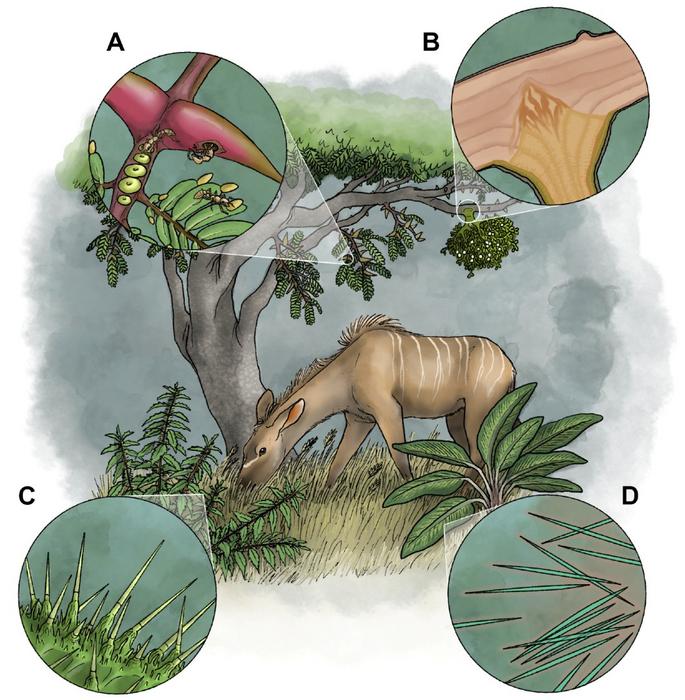The world of natural organisms is brimming with surprising complexity, especially when it comes to the mechanisms of defense and predation. A groundbreaking study from researchers at Loma Linda University has revealed that the use of venom is far more widespread across the biological spectrum than previously understood. This research highlights an unexpected dimension of life, where plants, fungi, bacteria, protists, and even some viruses harbor venomous traits akin to those observed in the more notorious venomous animals, such as snakes, spiders, and scorpions.
Traditionally, venom has been understood as a biological toxin introduced into another organism primarily through physical means like bites and stings. This new study suggests that this definition must be broadened to encompass a variety of organisms based outside the animal kingdom. The lead researcher, Dr. William K. Hayes, a prominent figure in biology at Loma Linda’s School of Medicine, emphasizes how crucial this understanding is to our biotic relationships and evolutionary patterns. As Hayes articulated, the significance of venom lies not simply in its toxic properties but also in its evolutionary advantage in survival, competition, and defense mechanisms within an ecosystem.
The implications of this research are multifaceted and potentially revolutionary. For centuries, biologists have been captivated by the deadly secretions of venomous animals, propelling numerous studies aimed at unraveling their biological mysteries. Until now, the lens of focus was predominantly animal-centric. Hayes and his team shifted this focus to explore non-animal examples of venom, leading to the identification of various plant species and microorganisms that utilize venom-like mechanisms. This exploration invites a re-evaluation of how we classify organisms based on their toxic capabilities, pushing the boundaries of biological research into uncharted territories.
The study goes into fascinating detail, demonstrating how plants and microorganisms utilize a diverse array of anatomical adaptations to deliver toxins effectively. For instance, many plants possess spines, thorns, or stinging hairs that can introduce toxic compounds into herbivorous animals. Not merely passive in nature, these plants engage in symbiotic relationships with stinging ants, providing them nutrients and shelter in return for their defensive abilities. This multi-faceted interaction illustrates the complex web of relationships in ecosystems, where the roles of both flora and fauna are interlinked through evolutionary adaptation.
Moreover, the researchers extend their findings beyond the plant kingdom, revealing that microorganisms such as certain bacteria and viruses have evolved sophisticated mechanisms akin to venom delivery. These include contractile injection systems and secretion systems that enable these organisms to inject toxins into their host cells or wounds. This evolutionary innovation allows for a broader understanding of how life interacts, survives, and adapts in competitive environments.
Hayes’ inquiry into the hidden diversity of venomous organisms began over a decade ago and reinforced his belief that our understanding of this phenomenon was not merely incomplete but vastly underestimated. His research team dedicated to exploring this previously overlooked domain found it teeming with examples of organisms across various kingdoms that have evolved to produce and utilize venom. This comprehensive approach not only highlights the diversity within venomous traits but also beckons researchers from various fields—ecology, microbiology, and evolutionary biology—to collaborate in further unveiling the complexities of these interactions.
The implications of these findings extend into practical realms too. By uncovering new forms of venomous mechanisms, researchers may unearth valuable resources that could inspire therapeutic advancements. The study of venom has historically led to life-saving medications and antivenoms, and this new understanding may unlock further potential for medical applications. The exploration of venomous mechanisms could lead to the discovery of novel biochemical tools and therapeutics that address significant health concerns.
Yet, we find ourselves at a foundational stage in this investigation. With investigators only having scratched the surface of venom evolution, Hayes calls for a renewed exploration of the pathways that have contributed to the divergence of venoms. The incorporation of gene duplication, the co-option of existing genes, and the influence of natural selection are all factors that warrant deeper scrutiny. To piece together this complex puzzle, collaboration among scientists from diverse fields will be essential.
In contemplating the broader picture, it becomes clear that our understanding of nature is continuously evolving. Each revelation about these previously obscured venomous organisms raises more questions than answers, inviting curiosity and exploration. This study not only reshapes how we think about venom but urges every sector of the scientific community to reconsider the biological processes that govern life.
As researchers plumb deeper into the hidden world of venom, we stand on the precipice of understanding radical evolutionary traits that have enabled survival in a myriad of organisms. This could contact our comprehension of biodiversity, enriching our grasp of ecological dynamics, and illuminating paths for conservation efforts in a world increasingly threatened by habitat destruction and climate change.
In conclusion, the landmark findings from Loma Linda University compel us to not only re-examine our knowledge about venom but ultimately reflect on our relationship with the ecological webs that sustain life on Earth. As scientists continue to explore the vast expanse of life, every detail matters, and every organism, venomous or not, plays a role in the intricate dance of ecology.
Subject of Research: The diversity and mechanisms of venomous organisms across various biological kingdoms.
Article Title: It’s a Small World After All: The Remarkable but Overlooked Diversity of Venomous Organisms, with Candidates Among Plants, Fungi, Protists, Bacteria, and Viruses
News Publication Date: 20-Feb-2025
Web References: MDPI Study Link
References: DOI Link
Image Credits: Artwork by Loma Linda University student M. Benjamin Streit
Keywords: Venom, Ecology, Evolution, Biochemistry, Plant defense mechanisms, Venomous organisms
Tags: biological complexity of natural organismsbroadened definitions of venomDr. William K. Hayes contributionsecological role of venom in ecosystemsevolutionary advantages of venomimplications of venom beyond animalsinterdisciplinary studies in biologyLoma Linda University research findingssurvival mechanisms in naturetoxins in bacteria and protistsvenom research in fungivenomous traits in plants





